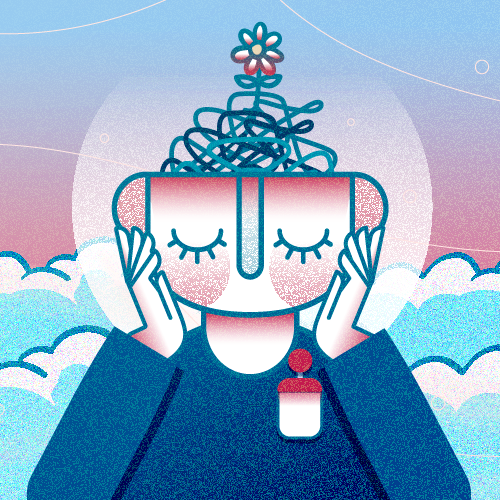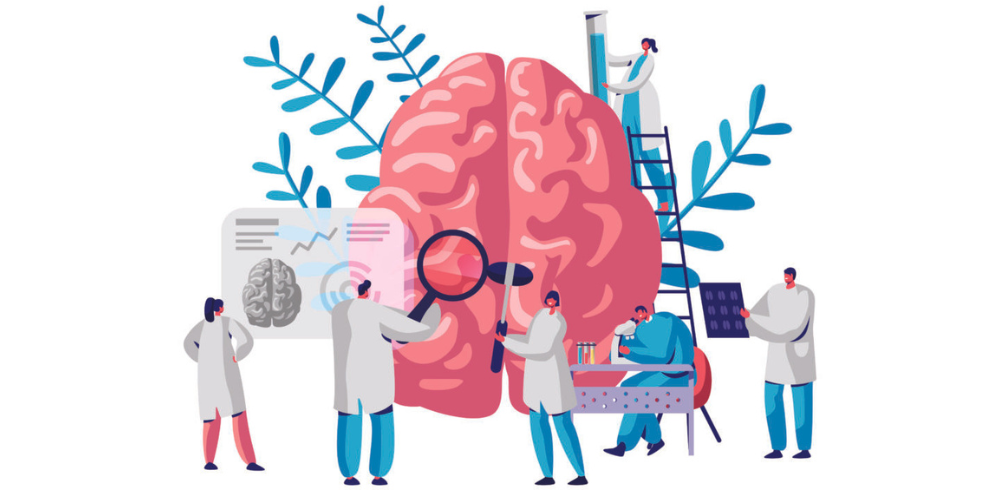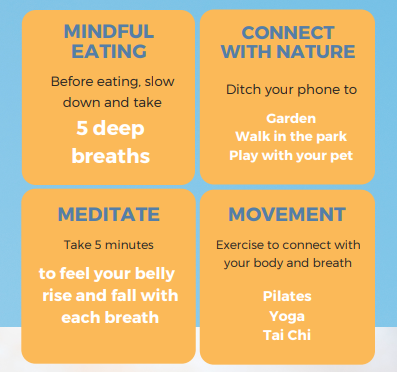Mindfulness in Medicine Toolkit

Click here for a list of resources you and your team can use to practice mindfulness and increase your well-being.
met him for an 18-month Well-Child visit. Little did I know this visit would end a year later in a dark hospital room, sitting quietly with his mom, facing his death. This is when I first realized how ill-equipped I was to deal with grief.
Medical school meant two years of science immersion and two years of clinical clerkships. Residency followed, where we learned how apt the term “resident” was. While these experiences provided knowledge, skills, and expertise to make effective and accurate clinical decisions, a startling gap lurked—I was never taught how to process loss, uncertainty, mistakes, and bad outcomes.
Medical training afforded me the ability to “do things,” but not the ability to be “present” with that which I was doing. This included the effects my “doing” was having on me and my patients. Positive outcomes swept past me like the tail end of a shooting star, ephemeral at best, a neutral event at worst. Negative outcomes hit me like a tsunami, drenching me to the bone with no towel in site. As the wise Dr. Rachel Naomi Remen writes in Kitchen Table Wisdom, “The expectation that we can be immersed in suffering and loss daily and not be touched by it is as unrealistic as expecting to be able to walk through water without getting wet.”
Being too consumed to notice moments that went well and stuck ruminating on those that went wrong, I often ran on autopilot from room-to-room and disconnected from the whole enterprise.
Learning a new language
In the article “Mindful Practice,” Dr. Ronald Epstein artfully presents the current thinking on mindfulness in medicine, and the integral nature it plays in professional competence. At the time, these were radical ideas. Certainly, Epstein’s opening statements raised eyebrows:
Resiliency Center Programming
Click here for a list of Resiliency Center programming that focuses on prioritizing optimal health across University of Utah Health employees, patients, and community members.
Mindful practitioners attend in a nonjudgmental way to their own physical and mental processes during ordinary, everyday tasks. This critical self-reflection enables physicians to listen attentively to patients’ distress, recognize their own errors, refine their technical skills, make evidence-based decisions, and clarify their values so that they can act with compassion, technical competence, presence, and insight.
What Epstein and his colleague, Dr. Michael Krasner, realized, was that health care professionals could reduce burnout and enhance flourishing by:
1. Cultivating a consistent mindfulness practice.
2. Connecting health care professionals through storytelling and shared narratives.
3. Building skills in appreciative interviewing: Asking questions of ourselves, our colleagues, and our teams in such a way that mines for what is good and strengthens the capacity for growth.
In sum, health care professionals need to master new qualities and skills.
The four qualities of a mindful health care profession
All over the world, mindfulness practices have been developed to help individuals establish the capacity in the mind to see the truth of how things are. The question then becomes how does mindfulness translate for medical professionals? What does it mean to be a healer, attending to our patients, moment-to-moment, with our full attention, on purpose, and non-judgmentally? Can we establish a capacity to see the true nature of things, when facing illness and death? The four qualities can help guide our treatment, decisions, and approaches as health care professionals.
1. Attentive observation
The human mind is a judgement machine, evolved to make complex, well-considered decisions. How we perceive and conceptualize what we observe around us (and within us) defines our reality. Attentive observation allows us to slow down, attend to our physiological responses, minimize biases, and bring awareness to the realities co-occurring in front of us.
- Example: A patient’s collection of signs and symptoms leads to a mental construction that drives our medical decisions.
- What can we do? Recognize our judging mind and intentionally suspend judgement. Instead, invite and entertain other possibilities to enhance decision-making and promote skillful action.
2. Curiosity
Curiosity is how we learn about the world. It is our desire to understand the who, what, where, when, and why of patients.
- Example: Even the 20th pediatric patient with bronchiolitis in the winter allows for discovery and the possibility of something new and surprising.
- What can we do? Learn more about yourself, your peers, your practice, and your patients. Not only does curiosity play an instrumental role in accurate medical decision making, but it also enriches the experience and is a portal to deeper human connection.
3. Beginner’s mind
The Sōtō Zen monk, Shunryu Suzuki, famously said, “In the beginner's mind there are many possibilities, but in the expert's mind there are few.”
- Example: Though pattern recognition and other heuristics allow seasoned clinicians to function efficiently and effectively in a complex environment, health care professionals risk flawed decision-making at the hands of cognitive biases that often come with experience.
- What can we do? Approach situations with an open mind that acknowledges complexity and entertains alternative explanations. This can short-circuit biases that lead to miscommunication, misdiagnosis, and medical error.
4. Presence
Psychologist and medical anthropologist, Dr. Arthur Kleinman, describes presence as “a calling forward or a stepping toward the other… built out of listening intensely, indicating that the person and their story matter…”
- Example: With patients, the more presence you invite into the room, the more depth, meaning, and shared understanding that arises. This undoubtedly enhances the care we deliver and how much we care about that caring.
- What can we do? Take time to listen deeply and care about the information you are receiving.
Personal change as a path to cultural change
As a medical student, it was standard operating procedure to work 12-14 hours per day, with a 30-hour call shift every three days. On one occasion, after being up for over 24 hours, I nodded off at a stop light on my way home from work. I was awakened by the jarring thump of my car hitting the car in front of me. This is just one example of the fallout of the culture of medicine. Is it time to recreate the culture of medicine?
Through honest appraisal, self-reflection, clear-eyed wisdom, and compassion towards ourselves and others, can we create new, healthy habits of mind and organizational cultures of well-being that serve us both personally and collectively? Based on conversations taking place across our organization, I believe we can. Ultimately, I believe we will. Medical professionals will always face harsh realities, grief, stress, and less-than-optimal solutions. A clear-eyed response to these realities must begin in the minds of individuals, whose actions are our “only true belongings… and the ground upon which [we] stand.”
This program is supported by the Health Resources and Services Administration (HRSA) of the U.S. Department of Health and Human Services (HHS). The contents are those of the author(s) and do not necessarily represent the official views of, nor an endorsement, by HRSA, HHS, or the U.S. Government. For more information, please visit HRSA.gov.
References
- Arthur Kleinman, The Art of Medicine: Presence, The Lancet 2017.
- Koun Franz, Buddhism’s “Five Remembrances” Are Wake-Up Calls for Us All, Lion's Roar 2021.
- Faith Fitzgerald, Curiosity, Annals of Internal Medicine 1999.
- Jon Kabat-Zinn: Defining Mindfulness, Mindful 2017.
- Joseph Goldstein's Dharma Talks
- Krasner et al, Association of an Educational Program in Mindful Communication With Burnout, Empathy, and Attitudes Among Primary Care Physicians, JAMA 2009.
- Mindful Practice in Medicine
- Ron Epstein, Mindful Practice, JAMA 1999.
- Tang et al, The Neuroscience of Mindfulness Meditation, Nat Rev Neurosci 2015.
- Shunryū Suzuki, Zen Mind, Beginner’s Mind, 2020.
David Sandweiss
Well-being expert and physician David Sandweiss explores the tangible sensations of earth, water, fire, and wind within you. Each element guides your awareness to the solidity of your bones, the fluidity of your breath, the warmth of your being, and the gentle breeze of your breath. By immersing yourself in these elemental experiences, you'll cultivate a profound sense of presence and gratitude for the miraculous intricacies of your own existence.
With the change of the season upon us, now is a great time to focus on self-care. Well-being specialist Jamuna Jones shares her top 10 tried-and-true tips aimed at optimizing your health and nurturing your mind, body, and soul during this seasonal shift.
Physician David Sandweiss shares the transformative power of mindful eating in the chaos of health care. Amidst the hurried pace and stressful conditions, health care professionals can find solace in savoring each bite with intention, bringing gratitude to their meals, and rediscovering the joy of food. Learn how this practice offers moments of tranquility in the midst of clinical chaos.

